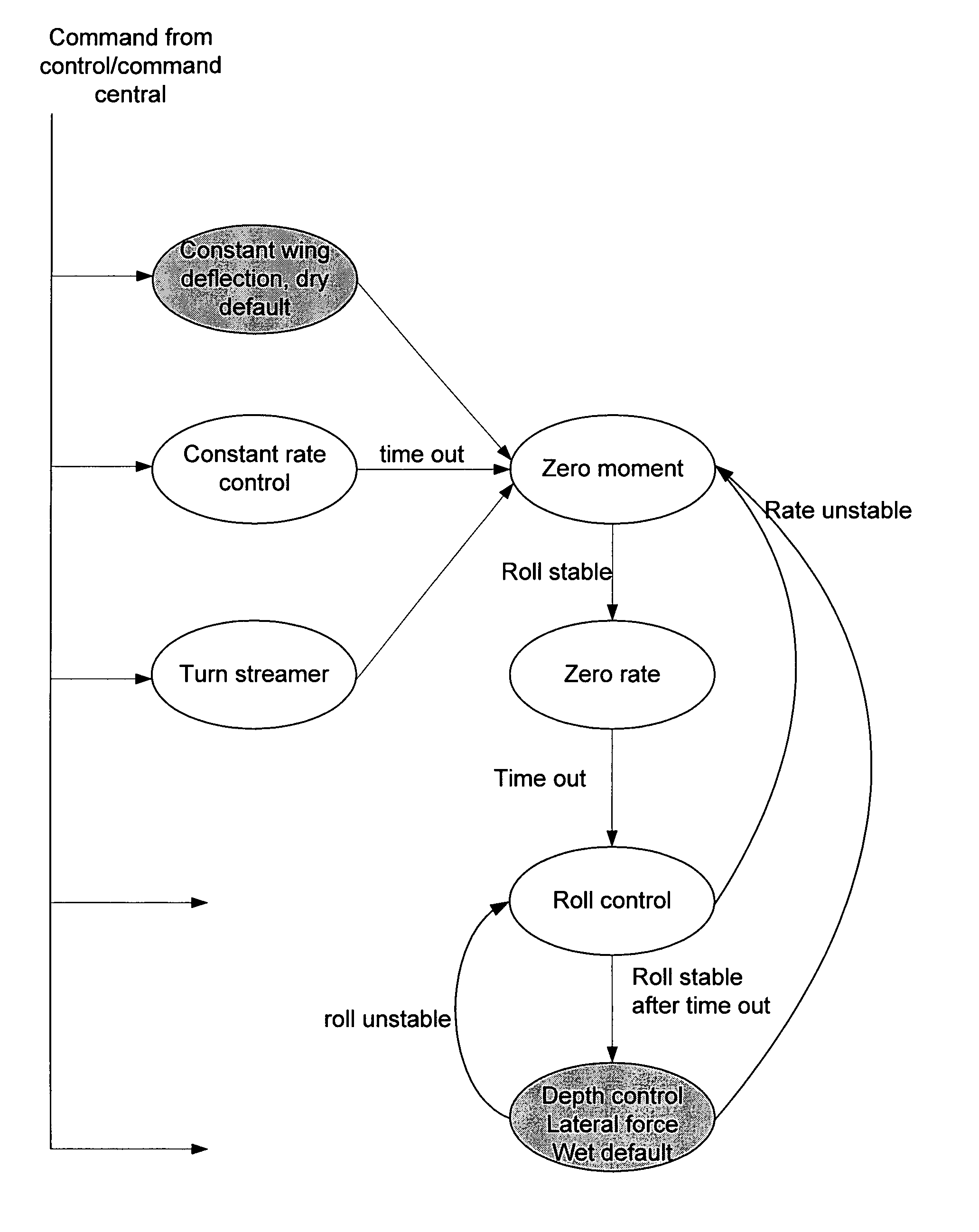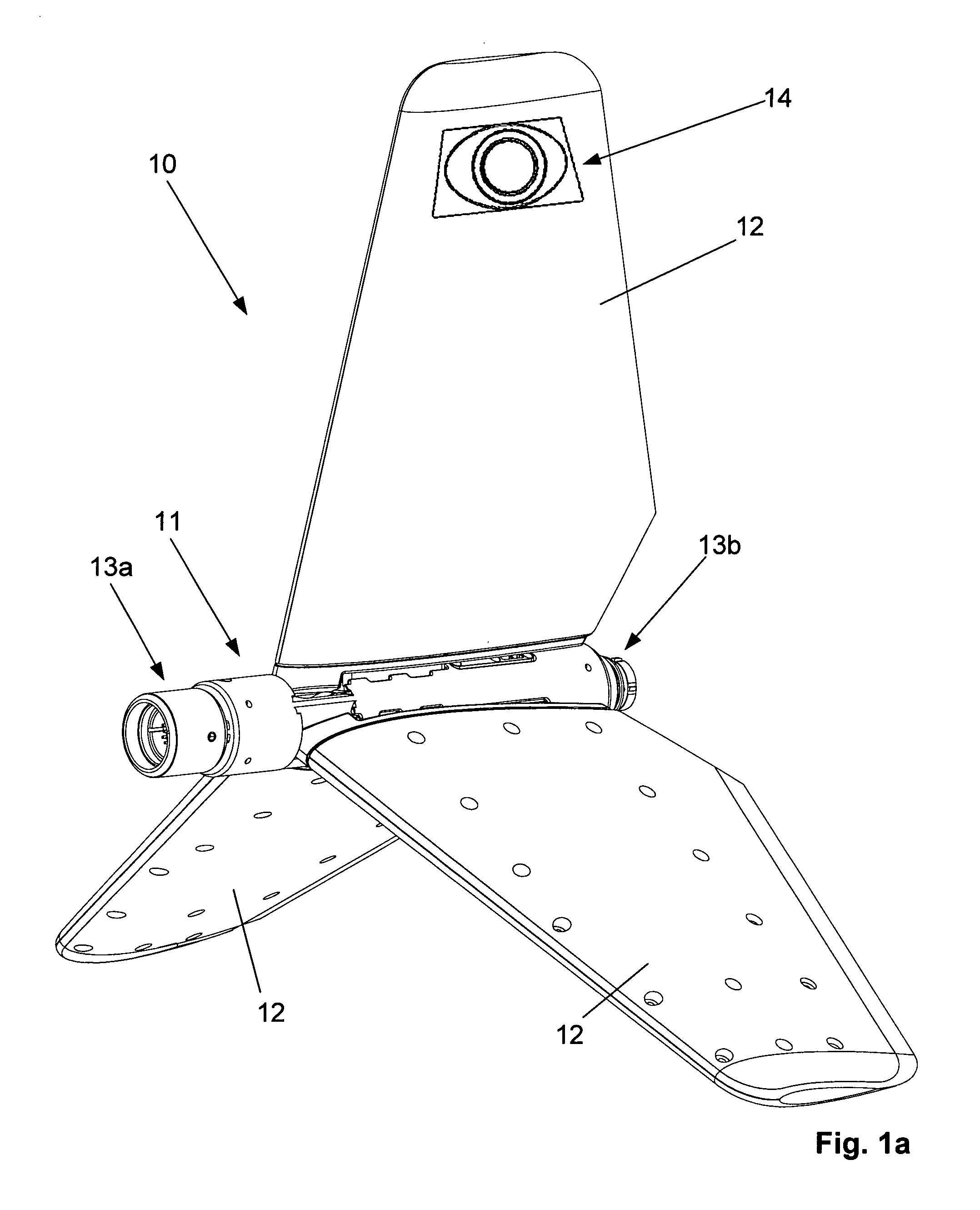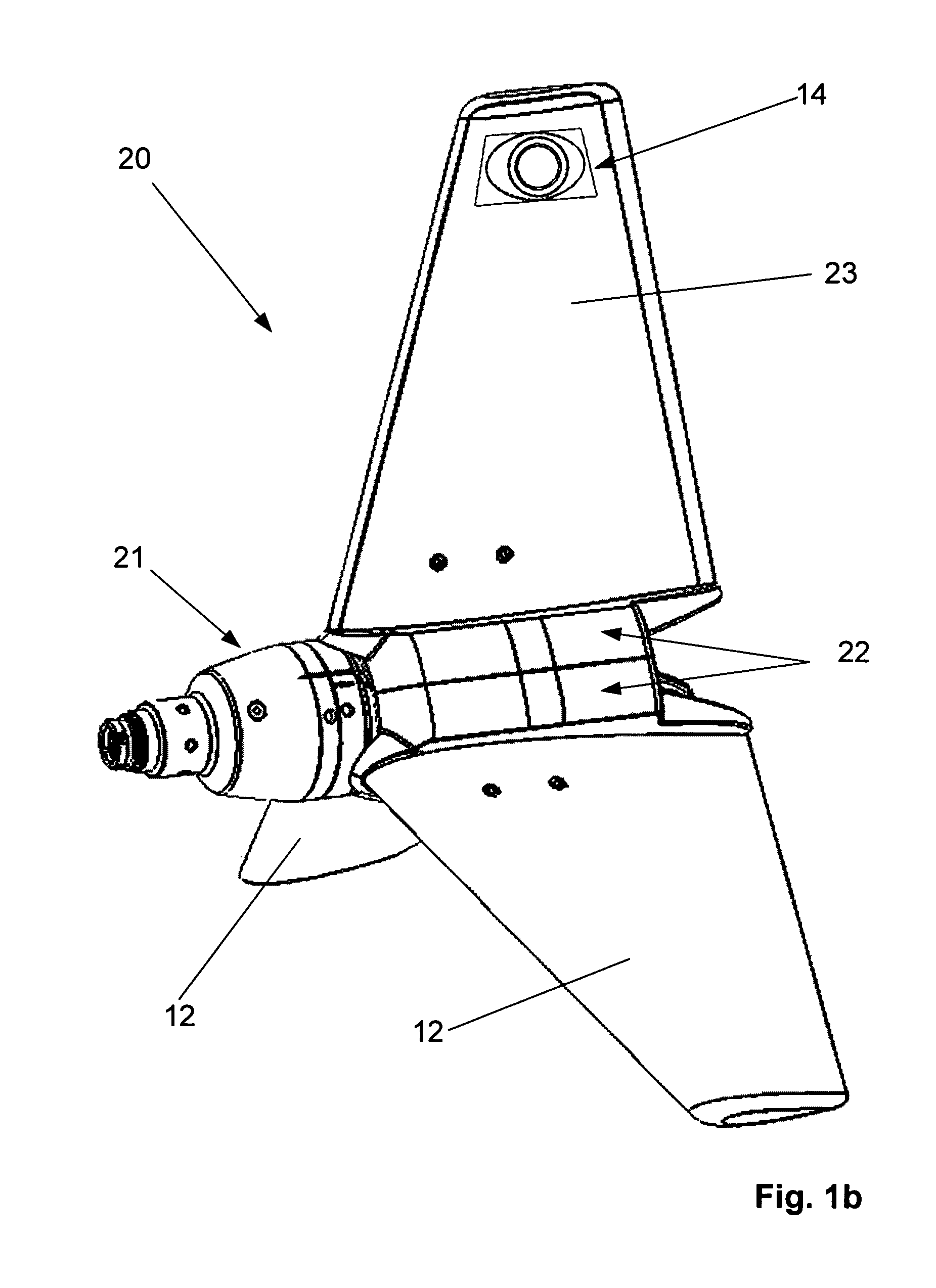System and method for controlling the position of a instrument cable towed in water
a technology of instrumented cables and systems, which is applied in the direction of instruments, process and machine control, electric devices, etc., can solve the problems of increased risk of instrumented cable entanglement, non-uniform distribution of forces acting perpendicular to the instrumented cables, and worst-case situations, so as to optimize the robustness of roll control
- Summary
- Abstract
- Description
- Claims
- Application Information
AI Technical Summary
Benefits of technology
Problems solved by technology
Method used
Image
Examples
Embodiment Construction
[0116]The invention is in the following described in further details with references to the drawings, where
[0117]FIG. 1a-b show two different control devices for controlling instrumented cables,
[0118]FIG. 2 shows an example of a system according to the invention in operation,
[0119]FIG. 3 shows a block diagram for local control, and
[0120]FIG. 4 shows a block diagram for global control.
[0121]First referring to FIG. 1a-b which illustrate control devices 10, 20 for connection in series between two adjacent instrumented cable sections of a multi-sectional cable, for controlling the instrumented cable. FIG. 1a shows an embodiment where the control device 10 is formed of a main body 11 and three similar wings 12, so-called smart wings, which are evenly distributed about the main body 11, and is a so-called three axis bird. The main body 11 is substantially an elongate streamlined tubular housing, which at its ends includes connection means 13a and 13b adapted for mechanical and electrical ...
PUM
 Login to View More
Login to View More Abstract
Description
Claims
Application Information
 Login to View More
Login to View More - R&D
- Intellectual Property
- Life Sciences
- Materials
- Tech Scout
- Unparalleled Data Quality
- Higher Quality Content
- 60% Fewer Hallucinations
Browse by: Latest US Patents, China's latest patents, Technical Efficacy Thesaurus, Application Domain, Technology Topic, Popular Technical Reports.
© 2025 PatSnap. All rights reserved.Legal|Privacy policy|Modern Slavery Act Transparency Statement|Sitemap|About US| Contact US: help@patsnap.com



